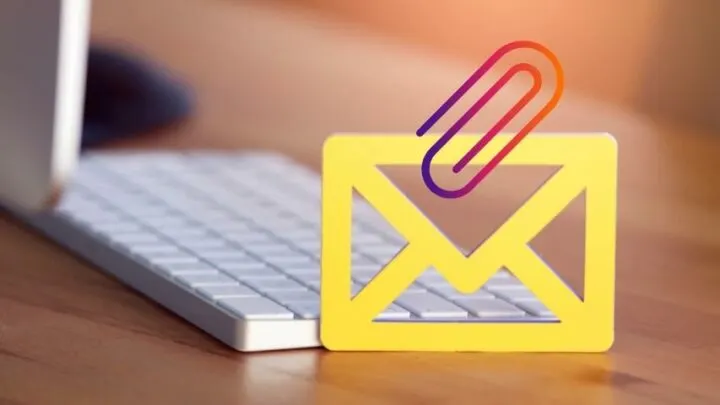Anyone working in today’s workforce knows that the way you present yourself is important.
Part and parcel of that is mastering basic business English vocabulary, but few people realize that your business English journey doesn’t stop there.
If you don’t pay attention, even simple acts like sending an email attachment can make you look unprofessional.
Can you say “attached with this email”?
Although it gets the point across, “attached with this email” sounds a bit strange. That’s because of the word “with.” Typically, people use the word “to” when talking about attached files. Instead, try “please see attached,” or “please find attached,” to indicate the presence of a file.
The word “with” and togetherness
At the core of whether or not you can use “attached with this email” when talking about attached files is one small word: the word “with.”
Grammatically speaking, “with” is a preposition, a class of words that show relationships between nouns and pronouns.
Specifically “with” is used to talk about people or things that are related to one another and where physical objects are located.
For example, you might say “I went to the beach with my brother” to talk about a trip where both you and your brother were present.
Likewise, the sentence “a prize is included with each box of cereal” uses “with” to explain where the prize is located.
Because “with” is used to discuss the location of objects, it’s used in physical letter writing to describe enclosures (physical objects included with a letter, like a printed resume or CV).
For instance, a short story author sending a printed story to a magazine might say “Please find enclosed with this letter a ten-thousand word story about witches and artichokes.”
When we’re discussing digital files, though, “with” sounds strange.
Why you shouldn’t use “attached with this email”
To recap, the phrase “attached with this email” comes from physical letters and packages.
While it’s understandable that people also use it in an email and it does get the point across, the obvious problem is that emails aren’t physical objects and neither are the files attached to them.
For that reason, we need to use a different preposition, the word “to.” Unlike the word “with,” the preposition “to” has a huge number of possible uses.
We don’t need to go into those here, however.
Instead, we’ll stick to what’s important for emails: when used as a preposition, “to” can refer to things that are attached or stuck together.
Crucially, “to” can be used to talk about the idea of attaching things as well as physical objects.
For that reason, it’s better to say “attached to this email” instead of “attached with this email.”
Another way to use “with” when talking about attachments
If you’re a “with” fan, don’t give up! There is actually a way you can use “with” when talking about attachments.
Remember that “with” has a few different meanings. In addition to the physical location of things, it’s also used to talk about two things that are related to one another.
What this means is that if you really like “with” you can say something like “I am sending you this email with the file you requested attached.”
The reason that works is because now the relationship you’re showing is that between two things (the email and the file), rather than suggesting that a digital file is physically located on a digital email.
It’s counter-intuitive, but it works.
Attached with this email — Better Alternatives
If you don’t mind leaving “with” in the dust, check out these other ways to let people know they should look for a file attachment.
Please see attached
One of the most common ways to let people know you’ve attached a file to an email is “please see attached.”
To use this, just say “please see attached” and then add a description of the file you’re sending.
Please find attached
Similar to the option above, you can write “please find attached“ to point out an email attachment. This works in exactly the same way.
Please find enclosed
You may notice a pattern by now: all of these options start with the word “please,” a sure sign that they’re formal business English.
This version, “please find enclosed,“ is a holdover from the days when people sent actual paper mail to one another. Although some people do still use this in e-mail, and it does get the point across, it can sound a little dated since it refers to physical items rather than digital attachments.
Other options
If none of these common ways to discuss attached files work for you, your best bet is to take a look at our in-depth article on this topic: how to write an e-mail with an attachment like a pro.
If you’re in a rush to send an email now, the short version is that you should always include a description of the file that you’re sending along with whichever method you choose from the list above to let people know there’s a file attached in the first place.
Of course, it’s always important to make sure you did attach the file as well. Many modern email systems have settings that will check for you, but it’s best to manually check every time.

Hey fellow Linguaholics! It’s me, Marcel. I am the proud owner of linguaholic.com. Languages have always been my passion and I have studied Linguistics, Computational Linguistics and Sinology at the University of Zurich. It is my utmost pleasure to share with all of you guys what I know about languages and linguistics in general.

